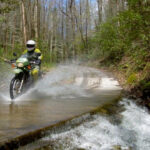For those deeply invested in the nuances of e-mountain bikes (e-MTBs), the drive unit often takes center stage. It’s the heart of the electric bike, the component that transforms a regular mountain bike into a trail-conquering machine. The allure lies in the blend of power and technology packed into a relatively small unit near the bottom bracket. While conventional components like forks and brakes are crucial, the electric motor system is where much of the e-bike magic happens.
Instead of delving into yet another review of standard bike parts, let’s focus on what truly differentiates e-bikes: their drive units. This summer provided a unique opportunity for an in-depth, side-by-side comparison between two leading full-power e-MTB motors: the Bosch Performance Line CX and the Specialized Turbo Full Power 2.2. Though their performance figures are close, their design philosophies represent distinct approaches to e-bike technology.
This article will explore these two prominent full-power e-MTB motors, focusing on the user experience, accompanying apps, and overall riding performance, with a particular lens on the E-bosch Bike system.
Bosch Performance Line CX: Numbers and Specs
| Feature | Bosch Performance Line CX | Specialized Turbo Full Power 2.2 |
|---|---|---|
| Torque | 85nm | 90nm |
| Battery Capacity | 750wh | 700wh |
| Max Wattage | 600w | 565w |
| Display Options | Kiox 300, various others | Mastermind TCU |
As highlighted in the table, both the Bosch Performance Line CX, as featured on a Cannondale Moterra Neo LT, and the Specialized Turbo Full Power 2.2, found on a Specialized Turbo Levo Carbon, offer comparable specifications. In practical terms, riders can expect similar levels of raw power from both systems. However, the numbers only tell part of the story. The true differences emerge when considering the user interface, integration, and the subtleties of power delivery that define the riding experience on an e-bosch bike and its competitors.
Controls and Integration: The Bosch E-Bike Cockpit
For most riders, the subtle performance variations between motors become secondary to the tangible aspects of control and integration. Examining the cockpits of bikes equipped with Bosch and Specialized systems reveals contrasting design philosophies.
The Cannondale Moterra Neo LT, with its Bosch system, presents a more feature-rich cockpit. It incorporates the Bosch LED Remote near the left grip and the Kiox 300 display positioned above the stem. This setup prioritizes readily available information, offering color-coded LEDs and a comprehensive display. The Kiox 300 is particularly notable for riders who value data, providing navigation capabilities when paired with a smartphone, and a wealth of ride metrics. Its mount versatility allows for customization, though keeping it protected is often preferred for off-road riding.
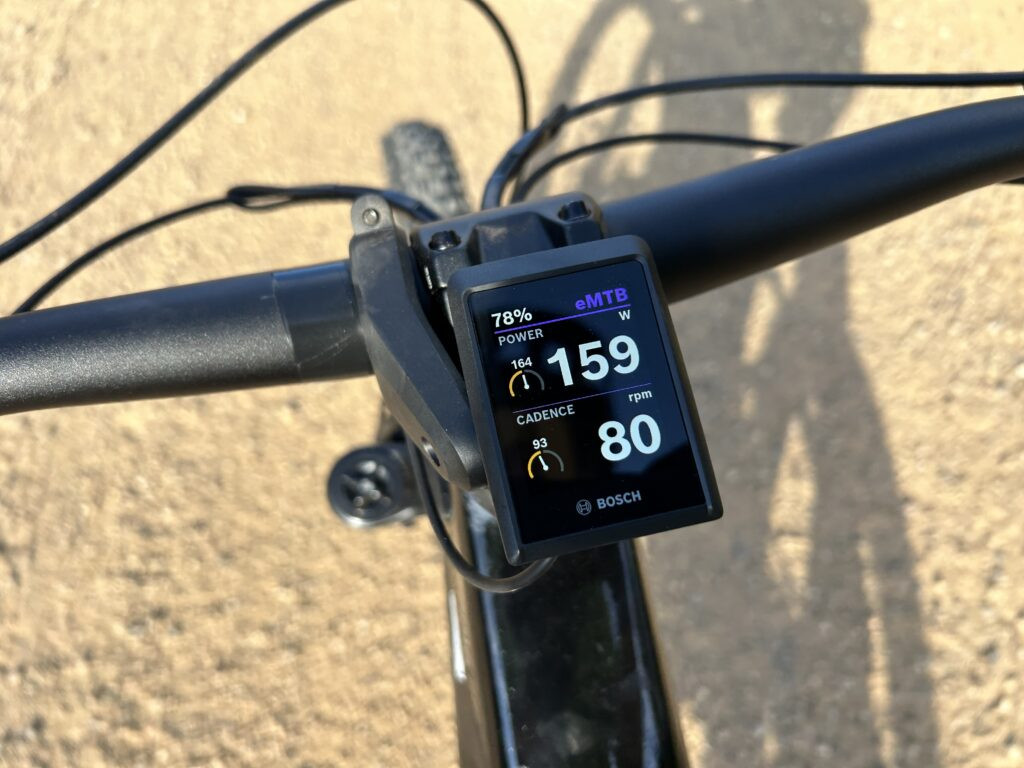 Bosch Kiox display
Bosch Kiox display
The Bosch Kiox 300 display offers extensive data for riders who appreciate detailed metrics on their e-bosch bike.
Bosch understands that user preferences vary, which is why they offer a range of control configurations. For example, the Crestline RS 75.50 EEB utilizes a minimalist Mini-Remote for assist mode changes and a System Controller display integrated directly into the frame’s top tube. This streamlined approach is favored by those who prefer a cleaner handlebar setup. While the integrated System Controller offers a sleek aesthetic, the Kiox display remains a popular choice for its detailed information and adaptability across various e-bosch bike models.
In contrast, the Specialized Turbo system on the Levo emphasizes seamless integration and a more understated presence. The Levo features a discreet handlebar remote with buttons for assist levels and walk mode, alongside a compact top tube integrated display. This display, while subtle and blending into the bike’s frame, can be less easily read on challenging trails due to its size. This design caters to riders who prefer a minimalist approach, with some even opting to use the “stealth mode” and minimize displayed information.
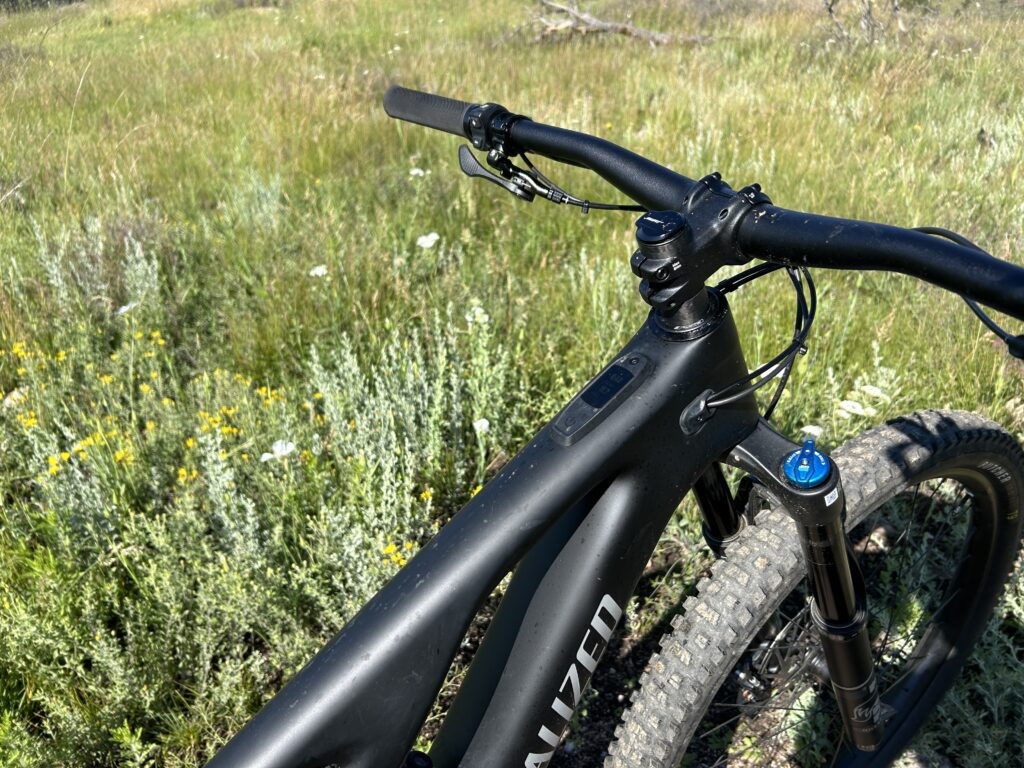 Specialized Turbo Levo handlebars
Specialized Turbo Levo handlebars
The Specialized Turbo Levo cockpit aims for a clean look, subtly integrating e-bike controls, contrasting with the more information-rich Bosch approach.
Further highlighting the integration differences, the Specialized Turbo employs a hub-mounted speed sensor, while the Bosch CX on the Moterra utilizes a spoke-mounted magnet. While primarily an aesthetic consideration, the hub-mounted sensor contributes to a cleaner look. Bosch does offer a wireless speed sensor, further enhancing integration possibilities for e-bosch bike systems, though it wasn’t implemented on the Cannondale Moterra in this instance.
Bosch Flow App: Command and Customize Your E-Bosch Bike
To fully leverage the capabilities of a modern e-MTB, engaging with its dedicated smartphone app is increasingly essential. While some mountain bikers might initially resist connected technology, the advantages it offers are undeniable. The Bosch Flow app serves as a comprehensive interface for e-bosch bike users to customize and monitor their ride experience.
Setting up the Bosch Flow app is a straightforward process. Upon initial connection with an e-bosch bike, the app intuitively guides users through firmware updates, providing detailed information about each update. This ensures the motor system is always running on the latest software, enhancing performance and potentially adding new features.
Motor tuning is a key strength of the Flow app. While the Specialized app utilizes a visual XY plot for mode customization, the Bosch app offers a user-friendly interface to adjust assist levels. It presents changes as numerical adjustments relative to the stock settings for each mode. Although the visual representation in the Specialized app might offer a quicker comparative overview, the Bosch Flow app’s system is effective and allows for precise adjustments to tailor the motor’s output to individual riding preferences.
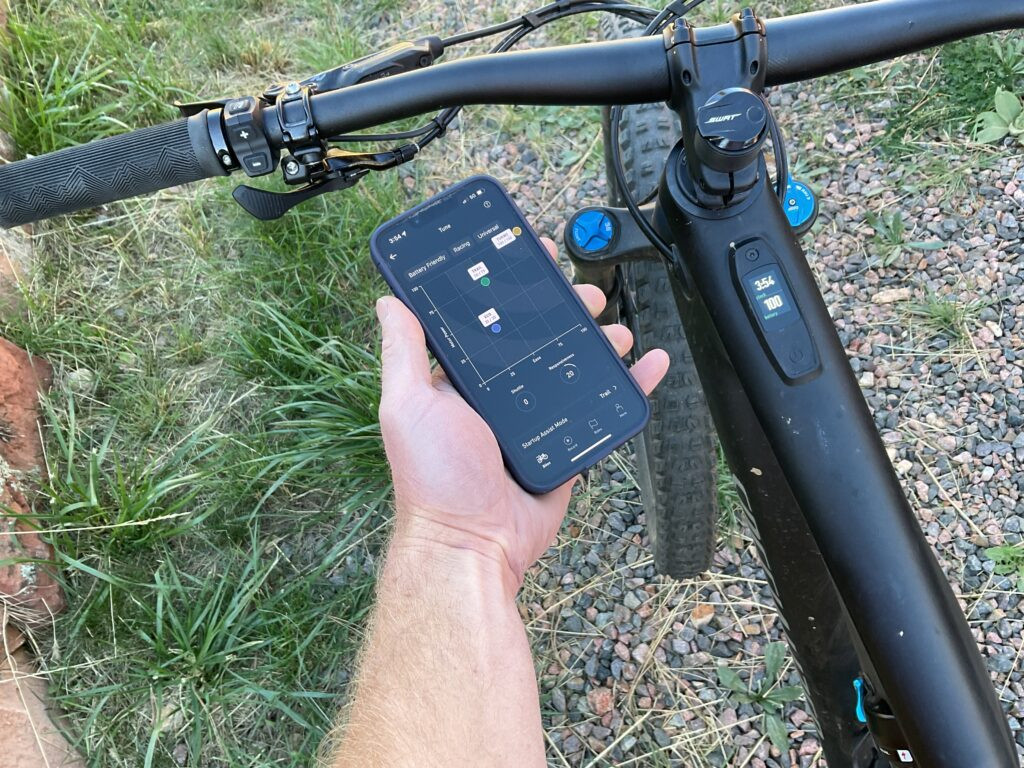 Adjusting e-bike motor tune with the Specialized app.
Adjusting e-bike motor tune with the Specialized app.
Visual tuning interfaces, like this in the Specialized app, offer a different approach to motor customization compared to the numerical adjustments in the Bosch Flow app.
A notable convenience of the Bosch Flow app is its automatic ride recording feature. Once connected to an e-bosch bike, the app starts recording automatically, eliminating the need to manually initiate tracking at the start of each ride. This is particularly beneficial for riders who frequently forget to press the record button.
Beyond ride recording and motor tuning, the Bosch Flow app offers navigation features. While not extensively tested in familiar local trails, the potential for phone-based navigation, coupled with turn-by-turn directions on the Kiox display, is significant. This functionality would be especially valuable for exploring new urban environments or venturing into unfamiliar trails on an e-bosch bike.
For e-MTB riders, the core functionalities of an app typically revolve around motor customization and ride data tracking. The Bosch Flow app excels in both these areas, providing a user-friendly and feature-rich experience for e-bosch bike owners. Once familiar with its nuances, the app becomes an invaluable tool for maximizing the potential of the Bosch drive system.
Performance on the Trail: The Bosch Power Delivery
Objectively comparing the on-trail performance of closely matched motors like the Bosch Performance Line CX and Specialized Turbo Full Power 2.2 is a nuanced task. As previously noted, their torque and power figures are remarkably similar, and battery capacities are also closely aligned.
One clear difference lies in the assist modes offered. The Bosch system provides four modes – Eco, Tour+, eMTB, and Turbo – while Specialized offers three. The perceived advantage of having four modes is the increased granularity in power assist. With the Bosch system, riders can configure three performance-oriented modes and utilize Eco as a dedicated battery-saving mode for extended rides or emergency situations. However, in practical riding scenarios, the need for such a dedicated bail-out mode might be infrequent.
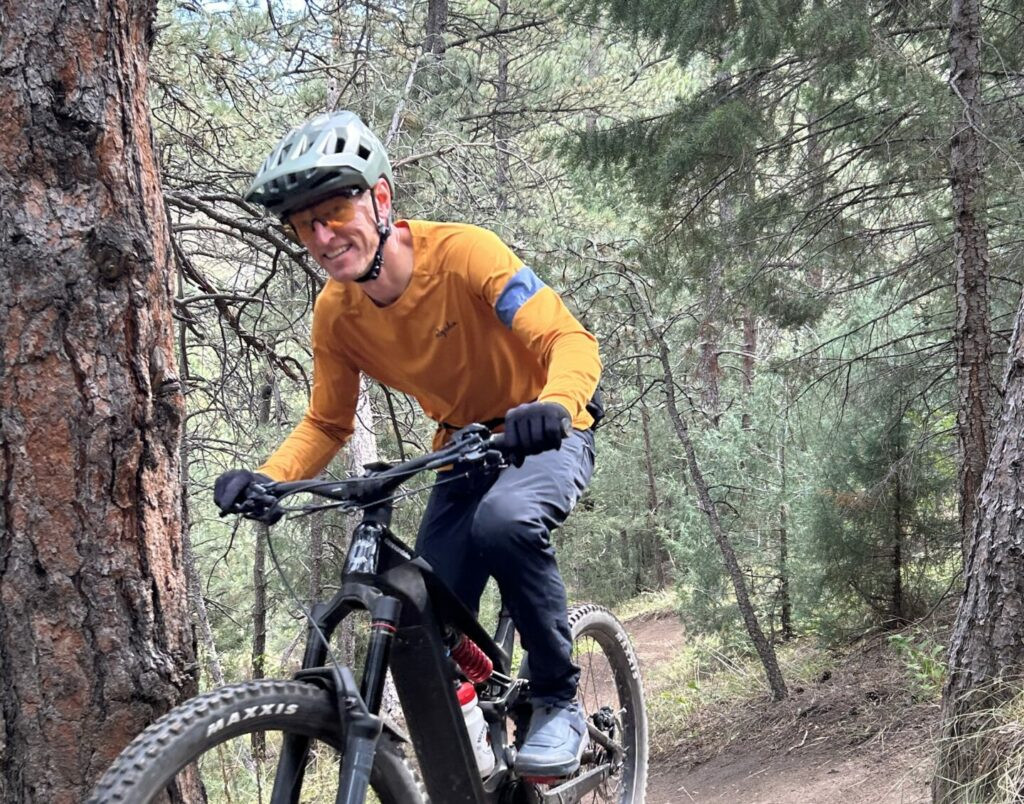 Riding an e-MTB
Riding an e-MTB
Enjoying the ride is paramount, and both Bosch and Specialized motors deliver enjoyable e-MTB experiences.
Motor noise is often a point of consideration for e-bike riders. In this aspect, the Specialized Turbo motor is perceived as slightly quieter, particularly at lower power outputs. The Bosch CX motor tends to produce a consistent, albeit not overly loud, whine across its operation. When the Specialized Turbo motor ramps up to higher outputs, its noise level approaches that of the Bosch, suggesting a difference in noise profile rather than a significant decibel disparity.
In terms of power delivery characteristics, the Specialized Turbo feels smoother from the initial pedal stroke across all its assist modes. The Bosch Performance Line CX, on the other hand, exhibits more variation in power delivery feel depending on the selected mode. The eMTB and Tour+ modes on the Bosch are particularly noteworthy for their smooth and natural power delivery, dynamically adjusting assist based on rider input. These dynamic modes closely mirror the overall feel of the Specialized Turbo system. The Bosch Turbo mode, in contrast, offers a more linear power delivery.
Experimenting with increasing the Turbo assist mode in the Bosch system can quickly lead to a sensation of excessive power with minimal pedal input. While easily adjustable back to factory settings, this highlights the breadth of customization available within the Bosch system and the potential to tailor the power delivery to very specific preferences.
At the upper end of the assist speed range (20mph for both systems), the Bosch Performance Line CX motor exhibits a subtle easing off of assistance as the bike approaches the speed limit. The Specialized Turbo motor, in comparison, cuts off assistance more abruptly at the maximum speed. However, for off-road mountain biking, speeds of 20mph are rarely sustained or even desirable. For technical trail riding, a lower assist cutoff speed might even be preferable, although current regulations dictate higher limits. This minor difference in top-end behavior is unlikely to be a significant factor for most e-MTB riders.
 Cannondale Moterra e-bike
Cannondale Moterra e-bike
Conclusion: Choosing Your E-Bosch Bike Experience
Ultimately, the comparison between the Bosch Performance Line CX and Specialized Turbo Full Power 2.2 motors reveals that both are exceptional drive units, offering different paths to a similar destination: enhanced e-MTB enjoyment.
The choice between them often boils down to personal preferences regarding ergonomics, user interface, and the broader ecosystem surrounding the motor system. Brand affiliations also play a role, as Specialized bikes will exclusively feature their Turbo motors, while Bosch motors are found across a wide array of e-bike brands and models.
The Specialized Turbo system emphasizes integration and a proprietary approach, for both better and worse. Bosch, as a vast multinational corporation, offers a comprehensive ecosystem with widespread parts availability and a diverse range of e-bike options. While Bosch systems require Bosch components, the sheer scale of their production ensures readily available replacement parts and broad compatibility.
This exploration isn’t intended to definitively declare one system superior to the other. Instead, it aims to encourage e-MTB shoppers to consider the nuances of drive units when making their purchasing decisions. The motor is a critical component that significantly shapes the e-bike riding experience. If drive units were inconsequential, we might all still be riding conventional mountain bikes. The advancements in e-bosch bike technology and systems like Specialized Turbo are what propel the e-MTB revolution and offer riders new levels of trail access and riding enjoyment.

